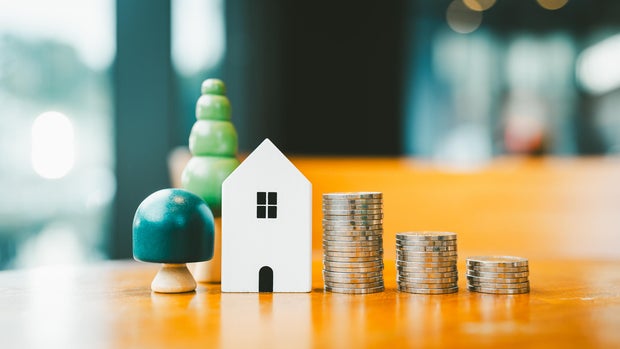Analysis of Current Home Equity Loan Market and its Implications for Sustainable Development Goals (SDGs)
Economic Context and Household Financial Stability (SDG 1, SDG 8)
In a climate of economic uncertainty marked by inflation and employment concerns, homeowners possess a unique opportunity to enhance financial stability through home equity. Current market data indicates that home equity levels are robust, providing a substantial asset base. The strategic use of this equity through affordable loans can serve as a critical tool for households to mitigate economic shocks, thereby supporting the objectives of SDG 1 (No Poverty) and contributing to household economic resilience, a key component of SDG 8 (Decent Work and Economic Growth).
- Current economic pressures include inflation and unemployment concerns.
- High home equity levels offer a source of collateral for borrowing.
- Responsible borrowing can prevent households from falling into poverty and support long-term financial planning.
Comparative Analysis of Borrowing Costs and Contribution to Economic Well-being (SDG 10)
The current interest rate environment for home equity loans presents a more accessible and affordable credit option compared to other prevalent forms of unsecured debt. This affordability is crucial for promoting financial inclusion and reducing the burden of high-interest debt, directly addressing the aims of SDG 10 (Reduced Inequalities) by providing a more equitable financial tool for asset-owning households.
- Home Equity Loans: The average rate for a 5-year loan is approximately 8.11%, near a two-year low.
- Personal Loans: Interest rates currently exceed 10%.
- Credit Cards: Interest rates remain above 20%.
Strategic Application of Home Equity for Advancing SDGs
Home equity loans provide capital that can be directed toward investments with significant positive impacts on various Sustainable Development Goals. By leveraging this financial resource, homeowners can actively contribute to a more sustainable and equitable future.
- SDG 4 (Quality Education): Funds can be allocated to finance higher education or vocational training, enhancing human capital and future employment opportunities.
- SDG 3 (Good Health and Well-being): Loans can cover significant medical expenses, ensuring access to necessary healthcare without incurring debilitating high-interest debt.
- SDG 9 (Industry, Innovation, and Infrastructure) & SDG 11 (Sustainable Cities and Communities): Capital can be invested in sustainable home improvements, such as energy-efficient retrofits, solar panel installation, or climate-resilient upgrades, contributing to greener infrastructure.
- SDG 8 (Decent Work and Economic Growth): The funds can serve as seed capital for launching or expanding small businesses, fostering entrepreneurship and local economic growth.
Outlook on Interest Rates and Policy Considerations
While minor interest rate cuts are anticipated from the Federal Reserve, their impact on home equity loan rates is projected to be minimal. Locking in a fixed rate in the current environment offers protection against future rate volatility. This approach ensures predictable repayment terms, which is essential for sustainable long-term financial management. However, it is imperative that homeowners approach this decision with caution. The use of a primary residence as collateral necessitates a thorough risk assessment to prevent foreclosure, an outcome that would directly undermine household stability and the goals of SDG 1 (No Poverty).
Conclusion and Recommendations
The current market, characterized by low home equity loan rates and high equity levels, offers a valuable opportunity for homeowners to access capital. When utilized strategically, these funds can support household financial health and contribute directly to achieving multiple Sustainable Development Goals.
- Homeowners should conduct a comprehensive evaluation of their financial capacity and long-term objectives before securing a home equity loan.
- Loan proceeds should be prioritized for investments that yield long-term benefits aligned with SDGs, including education, health, sustainable infrastructure, and economic empowerment.
- A rigorous risk assessment is essential. Borrowers must ensure the long-term affordability of repayments to safeguard their primary asset and maintain financial stability, thereby upholding the principles of sustainable and responsible finance.
Analysis of the Article in Relation to Sustainable Development Goals (SDGs)
1. Which SDGs are addressed or connected to the issues highlighted in the article?
The article, while focused on consumer finance, touches upon broader economic issues that connect to several Sustainable Development Goals (SDGs). The primary connections are to goals concerning economic stability, access to financial services, and housing security.
-
SDG 1: No Poverty
The article mentions that due to economic factors like inflation, homeowners find it “difficult to make ends meet.” This relates to financial vulnerability and economic strain, which are central to the goal of ending poverty in all its forms. Access to credit, such as a home equity loan, can be a tool for households to manage financial shocks and maintain economic stability, thereby preventing a slide into poverty.
-
SDG 8: Decent Work and Economic Growth
This goal is strongly connected as the article’s context is framed by macroeconomic indicators like “inflation” and “unemployment.” These factors directly impact economic growth and the financial well-being of the population. The discussion of interest rates, Federal Reserve policy, and access to credit products like home equity loans falls under the umbrella of promoting a stable and inclusive economic environment.
-
SDG 11: Sustainable Cities and Communities
The core topic of the article is home equity, which is intrinsically linked to housing. This SDG aims to ensure access to adequate and affordable housing. The article discusses a financial mechanism for homeowners to leverage their primary asset. It also explicitly warns of the risk of “foreclosure,” which is a direct threat to housing security and the stability of communities.
2. What specific targets under those SDGs can be identified based on the article’s content?
Based on the themes discussed, the following specific SDG targets can be identified:
-
Target 1.4 (under SDG 1)
“By 2030, ensure that all men and women, in particular the poor and the vulnerable, have equal rights to economic resources, as well as access to… ownership and control over… property, [and] financial services…”
The article directly addresses this target by discussing how homeowners can use their control over property (their home) to access financial services (a home equity loan). It explores the terms, benefits, and risks of this access, highlighting a key mechanism for leveraging economic resources.
-
Target 8.10 (under SDG 8)
“Strengthen the capacity of domestic financial institutions to encourage and expand access to banking, insurance and financial services for all.”
The article is an example of information dissemination about a specific financial service offered by domestic institutions (banks). It analyzes the affordability and accessibility of home equity loans compared to other products like personal loans and credit cards, which relates to the goal of expanding access to financial services.
-
Target 11.1 (under SDG 11)
“By 2030, ensure access for all to adequate, safe and affordable housing and basic services…”
While the article is for existing homeowners, it connects to this target by addressing financial stability, which is crucial for maintaining housing. The ability to borrow against home equity can help owners afford repairs or manage expenses, thus keeping their housing adequate and safe. The mentioned risk of “foreclosure” directly underscores the importance of sustainable housing finance in achieving this target.
3. Are there any indicators mentioned or implied in the article that can be used to measure progress towards the identified targets?
Yes, the article mentions several specific data points and economic factors that can be used as indicators to measure progress towards the identified targets.
-
Indicators for Financial Access and Affordability (Targets 1.4 and 8.10)
- Interest Rates on Financial Products: The article provides concrete figures that serve as indicators of the cost of credit. It states the “average rate of just 8.11% on a 5-year home equity loan,” and compares this to personal loan rates (“comfortably over 10%”) and credit card rates (“still over 20%”). These rates measure the affordability of different financial services.
- Level of Home Equity: The article notes that “home equity levels are robust in many parts of the country.” The total value of tappable home equity is a key indicator of the capacity of homeowners to access this form of credit.
-
Indicators for Macroeconomic Stability (related to SDG 8)
- Inflation Rate: The text explicitly opens with “concerns over inflation,” identifying it as a key pressure on household finances.
- Unemployment Rate: “Unemployment” is cited alongside inflation as a primary economic concern affecting homeowners’ financial decisions.
-
Indicators for Housing Security (Target 11.1)
- Foreclosure Rate: The article implies this indicator by warning that “Failure to pay here could result in foreclosure.” The rate of foreclosures is a direct measure of housing insecurity and the failure of households to maintain access to adequate housing.
4. Table of SDGs, Targets, and Indicators
| SDGs | Targets | Indicators Identified in the Article |
|---|---|---|
| SDG 1: No Poverty | Target 1.4: Equal rights to economic resources, including access to financial services and control over property. |
|
| SDG 8: Decent Work and Economic Growth | Target 8.10: Strengthen and expand access to banking and financial services for all. |
|
| SDG 11: Sustainable Cities and Communities | Target 11.1: Ensure access for all to adequate, safe and affordable housing. |
|
Source: cbsnews.com







